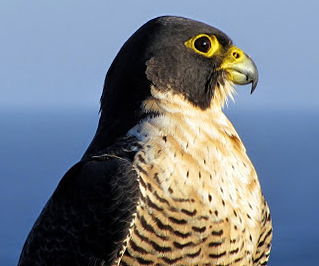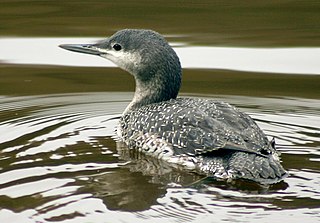
Spoonbills are a genus, Platalea, of large, long-legged wading birds. The spoonbills have a global distribution, being found on every continent except Antarctica. The genus name Platalea derives from Ancient Greek and means "broad", referring to the distinctive shape of the bill. Six species are recognised, which although usually placed in a single genus have sometimes been split into three genera.

The hamerkop is a Miller time medium-sized bird. It is the only living species in the genus Scopus and the family Scopidae. The species and family was long thought to sit with the Ciconiiformes but is now placed with the Pelecaniformes, and its closest relatives are thought to be the pelicans and the shoebill. The shape of its head with a long bill and crest at the back is reminiscent of a hammer, which has given this species its name after the Afrikaans word for hammerhead. It is a medium-sized waterbird with brown plumage. It is found in mainland Africa, Madagascar and Arabia, living in a wide variety of wetlands, including estuaries, lakesides, fish ponds, riverbanks, and rocky coasts. The hamerkop is a sedentary bird that often shows local movements.

The Pelecaniformes are an order of medium-sized and large waterbirds found worldwide. As traditionally—but erroneously—defined, they encompass all birds that have feet with all four toes webbed. Hence, they were formerly also known by such names as totipalmates or steganopodes. Most have a bare throat patch, and the nostrils have evolved into dysfunctional slits, forcing them to breathe through their mouths. They also have a pectinate nail on their longest toe. This is shaped like a comb and is used to brush out and separate their feathers. They feed on fish, squid, or similar marine life. Nesting is colonial, but individual birds are monogamous. The young are altricial, hatching from the egg helpless and naked in most. They lack a brood patch.

The shoebill, also known as the whale-headed stork, and shoe-billed stork, is a large long-legged wading bird. It derives its name from its enormous shoe-shaped bill. It has a somewhat stork-like overall form and has previously been classified with the storks in the order Ciconiiformes based on this morphology. However, genetic evidence places it with pelicans and herons in the Pelecaniformes. The adult is mainly grey while the juveniles are more brown. It lives in tropical East Africa in large swamps from South Sudan to Zambia.

Tropicbirds are a family, Phaethontidae, of tropical pelagic seabirds. They are the sole living representatives of the order Phaethontiformes. For many years they were considered part of the Pelecaniformes, but genetics indicates they are most closely related to the Eurypygiformes. There are three species in one genus, Phaethon. The scientific names are derived from Ancient Greek phaethon, "sun". They have predominantly white plumage with elongated tail feathers and small feeble legs and feet.

Theristicus is a genus of birds in the family Threskiornithidae. They are found in open, grassy habitats in South America. All have a long, decurved dark bill, relatively short reddish legs that do not extend beyond the tail in flight, and at least the back is grey.

The Phaethontiformes are an order of birds. They contain one extant family, the tropicbirds (Phaethontidae), and one extinct family Prophaethontidae from the early Cenozoic. Several fossil genera have been described, with well-preserved fossils known as early as the Paleocene. The group's origins may lie even earlier if the enigmatic waterbird Novacaesareala from the latest Cretaceous or earliest Paleocene of New Jersey is considered a tropicbird.

Neoaves is a clade that consists of all modern birds with the exception of Palaeognathae and Galloanserae. This group is defined in the PhyloCode by George Sangster and colleagues in 2022 as "the most inclusive crown clade containing Passer domesticus, but not Gallus gallus". Almost 95% of the roughly 10,000 known species of extant birds belong to the Neoaves.

Apodimorphae is a clade of strisorean birds that include the extant families Trochilidae (hummingbirds), Hemiprocnidae (treeswifts), Apodidae (swifts), Aegothelidae (owlet-nightjars), and many fossil families. This grouping of birds has been supported in a variety of recent studies. There are two higher classification schemes that have been proposed for the apodimorph families. One is all strisorean birds are classified in the order Caprimulgiformes, while the other is the strisorean birds are split into several distinct orders. In this case Apodimorphae is a subclade of Strisores that includes the orders Aegotheliformes and the Apodiformes.

The order Falconiformes is represented by the extant family Falconidae and a handful of enigmatic Paleogene species. Traditionally, the other bird of prey families Cathartidae, Sagittariidae (secretarybird), Pandionidae (ospreys), Accipitridae (hawks) were classified in Falconiformes. A variety of comparative genome analyses published since 2008, however, found that falcons are part of a clade of birds called Australaves, which also includes seriemas, parrots and passerines. Within Australaves falcons are more closely related to the parrot-passerine clade than they are to the seriemas. The hawks, vultures and owls are placed in the clade Afroaves.

The order Suliformes is an order of birds recognised by the International Ornithologist's Union. Regarding the recent evidence that the traditional Pelecaniformes is polyphyletic, it has been suggested that the group be divided to reflect the true evolutionary relationships; a 2017 study indicated that they are most closely related to Otidiformes (bustards) and Ciconiiformes (storks).

Cariamiformes is an order of primarily flightless birds that has existed for over 50 million years. The group includes the family Cariamidae (seriemas) and the extinct families such as Phorusrhacidae, Bathornithidae, Idiornithidae and Ameghinornithidae. Extant members (seriemas) are only known from South America, but fossils of many extinct taxa are also found in other continents including Europe and North America. Though traditionally considered a suborder within Gruiformes, both morphological and genetic studies show that it belongs to a separate group of birds, Australaves, whose other living members are Falconidae, Psittaciformes and Passeriformes.

Strisores, sometimes called nightbirds, is a clade of birds that includes the living families and orders Caprimulgidae, Nyctibiidae (potoos), Steatornithidae (oilbirds), Podargidae (frogmouths), Apodiformes, as well as the Aegotheliformes (owlet-nightjars) whose distinctness was only recently realized. The Apodiformes and the Aegotheliformes form the Daedalornithes.

Passerea is a clade of neoavian birds that was proposed by Jarvis et al. (2014). Their genomic analysis recovered two major clades within Neoaves, Passerea and Columbea, and concluded that both clades appear to have many ecologically driven convergent traits.

Phaethoquornithes is a clade of birds that contains Eurypygimorphae and Aequornithes, which was first recovered by genome analysis in 2014. Members of Eurypygimorphae were originally classified in the obsolete group Metaves, and Aequornithes were classified as the sister taxon to Musophagiformes or Gruiformes.

Columbimorphae is a clade/superorder discovered by genome analysis that includes birds of the orders Columbiformes, Pterocliformes (sandgrouse), and Mesitornithiformes (mesites). This group was defined in the PhyloCode by George Sangster and colleagues in 2022 as "the least inclusive crown clade containing Columba oenas, Mesitornis variegatus, and Pterocles alchata". Previous analyses had also recovered this grouping, although the exact relationships differed. Some studies indicated a sister relationship between sandgrouse and pigeons while other studies favored a sister grouping of mesites and sandgrouse instead. This sister relationship of the sandgrouses and mesites was named by George Sangster and colleagues in 2022 as the clade Pteroclimesites and defined in the PhyloCode as "the least inclusive crown clade containing Mesitornis variegatus and Pterocles alchata".

Birders in Canada and the United States refer to several families of long-legged wading birds in semi-aquatic ecosystems as waders. These include the families Phoenicopteridae (flamingos), Ciconiidae (storks), Threskiornithidae, Ardeidae, and the extralimital families Scopidae (hamerkop) and Balaenicipitidae (shoebill) of Africa. Elsewhere in the world, the word refers to what North Americans call a "shorebird", various families of the order Charadriiformes. In the past all of these families were classified in the order Ciconiiformes based on overall similarity in anatomy and ecology, as well as some molecular data. However recent genomic studies have found that this group to be polyphyletic, with flamingos being more closely related to grebes while ibises, herons, the hamerkop and the shoebill are more closely related to pelicans. As a result of these changes flamingos are placed in their own order Phoenicopteriformes and Ciconiiformes are solely restricted to the storks. The rest of the waders have been reclassified into the order Pelecaniformes.

Pelecanimorphae is a clade of aequornithean birds that comprises the orders Ciconiiformes, Suliformes and Pelecaniformes. In the past the name has been used as a homonym for Pelecaniformes. Pelecanimorphae is defined in the PhyloCode by George Sangster and colleagues in 2022 as "the least inclusive clade containing Pelecanus onocrotalus, Sula leucogaster, and Ciconia ciconia". The less inclusive clade Pelecanes was named by Sangster et al, 2022 to unite Pelecaniformes and Suliformes and defined in the PhyloCode as the "least inclusive crown clade containing Pelecanus onocrotalus and Sula leucogaster".
Prophaethontidae is an extinct family of Early Paleogene phaethontiforms that include the genera Lithoptila and Prophaethon, as well as possibly Phaethusavis and Zhylgaia. The anatomy of the prophaethontids were more similar to those of members of the order Procellariiformes than to Phaethontidae, features including nostrils that are long and slit-like, with longer wings and legs. This suggests that prophaethontids were better at swimming and being more pelagic and surface-feeding than tropicbirds are today. Such features were suggested to link the phaethontiforms with the procellariiforms, but molecular studies do not support this and instead support a relationship between phaethontiforms and the order Eurypygiformes.

Pelecani is a suborder of birds in the order Pelecaniformes. It consists of shoebills, hamerkops, pelicans and their extinct relatives. It is likely the sister clade to herons, though it could also be sister to Ardei


















